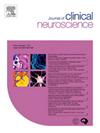A population based survival analysis of skull base and sacral-coccygeal chordomas in an elderly population: 2000–2021
IF 1.9
4区 医学
Q3 CLINICAL NEUROLOGY
引用次数: 0
Abstract
Chordoma is an aggressive primary osseous tumor that most often arises from the sacral-coccygeal region and the skull base. Treatment typically requires en bloc gross total resection necessitating significant iatrogenic tissue disruption and physiological stress making management in a vulnerable elderly cohort challenging. The Surveillance, Epidemiology, and End Results (SEER) database was employed to isolate cases of chordoma in patients 65+ years of age between the years 2000–2021. Kaplan Meier survival analyses were used to identify survival trends. Multivariate cox regression analysis controlled for confounding variables. A subgroup analysis comparing geriatric survival to an adult cohort was performed. A total of 380 cases (128 skull base, 252 sacral-coccygeal) were included. Surgery not performed improved cumulative tumor-specific survival in both univariate and multivariate analyses (HR = 0.49, 95 % CI [0.27–0.88], p = 0.016), but surgery did not impact cumulative all-cause survival nor primary site-specific all-cause survival. Geriatric survival (89.2 ± 4.6 months) was significantly shorter than adult survival (187.6 ± 4.9 months) in subgroup analysis (p < 0.001). Year of diagnosis did not significantly impact survival. Minimal improvements in geriatric chordoma survival have been made over the last two decades. Worsened tumor-specific survival with surgery likely results from the need for resection of advanced disease that inherently carries high risk within this population and surgery being deferred in the event of less advanced disease. Further study is needed to improve medical and surgical therapies within this cohort to improve survival.
老年人群颅底和骶尾骨脊索瘤的人群生存分析:2000-2021
脊索瘤是一种侵袭性的原发性骨肿瘤,最常发生在骶骨-尾骨区和颅底。治疗通常需要整体全切除,这需要显著的医源性组织破坏和生理应激,使易受伤害的老年群体的管理具有挑战性。监测、流行病学和最终结果(SEER)数据库用于分离2000-2021年间65岁以上患者的脊索瘤病例。Kaplan Meier生存分析用于确定生存趋势。多变量cox回归分析控制了混杂变量。进行了一个亚组分析,比较了老年生存率和成人生存率。共380例,其中颅底128例,骶骨-尾骨252例。在单因素和多因素分析中,手术没有改善累积肿瘤特异性生存(HR = 0.49, 95% CI [0.27-0.88], p = 0.016),但手术没有影响累积全因生存和原发性部位特异性全因生存。在亚组分析中,老年生存期(89.2±4.6个月)显著短于成人生存期(187.6±4.9个月)(p <;0.001)。诊断年份对生存率无显著影响。在过去的二十年里,老年性脊索瘤的存活率有了微小的改善。手术导致的肿瘤特异性生存恶化可能是由于需要切除在这一人群中本身具有高风险的晚期疾病,而在不太晚期的疾病中推迟手术。需要进一步的研究来改善该队列的内科和外科治疗以提高生存率。
本文章由计算机程序翻译,如有差异,请以英文原文为准。
求助全文
约1分钟内获得全文
求助全文
来源期刊

Journal of Clinical Neuroscience
医学-临床神经学
CiteScore
4.50
自引率
0.00%
发文量
402
审稿时长
40 days
期刊介绍:
This International journal, Journal of Clinical Neuroscience, publishes articles on clinical neurosurgery and neurology and the related neurosciences such as neuro-pathology, neuro-radiology, neuro-ophthalmology and neuro-physiology.
The journal has a broad International perspective, and emphasises the advances occurring in Asia, the Pacific Rim region, Europe and North America. The Journal acts as a focus for publication of major clinical and laboratory research, as well as publishing solicited manuscripts on specific subjects from experts, case reports and other information of interest to clinicians working in the clinical neurosciences.
 求助内容:
求助内容: 应助结果提醒方式:
应助结果提醒方式:


